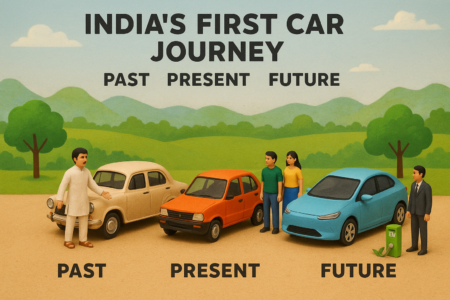Web 3.0, the third iteration of the internet built on blockchain technology, is expected to completely change how people and machines communicate online and do business. The Read-Only-Web, a more static version of the Internet that offered minimal potential for user interaction, was a key component of the early Internet, or Web 1.0, which emerged in the late 1980s.
The second phase, known as Web 2.0, started roughly about 2005 and completely changed the internet with features that made it possible for people to communicate and engage with one another and for communities and businesses to grow through e-commerce and the facilitation of online payments.
Following the liberalization of the Indian economy in the late 1990s, another industry was quickly developing alongside the development of the Internet. Within a decade, this sector—known as ITes—made India the center of the world’s information technology, powering enormous corporations everywhere.

However, India merely acted as offshore support for the emergence of internet giants like Google, Facebook, and Amazon thanks to all this significant assistance for the development of Web 1.0 and Web 2.0. These enormous corporations eventually developed into immensely important entities that influenced the world’s narrative and determined the social and political environment.
India contributed and was dynamic in these advancements, but despite this, it was only seen as a partner in offshore support, missing the chance to show leadership in governance and policy-making.

By 2024, India will be a clear leader in the global IT industry, supported by top talent, expertise, and a startup environment.
India has a chance to take advantage of the opportunity thanks to blockchain technology, which is the foundation of Web 3.0 and an essential component of software development. To design and influence the global regulations guiding the growth of this subsequent stage of the Internet revolution, India must seize the first-mover advantage. India can take advantage of this early stage by taking the lead and acting as a catalyst, bringing together synergies amongst business participants, as governments globally struggle to define a viable governance structure for Web 3.0.

According to research by the US-India Strategic Partnership Forum (USISPF), Web 3.0 has the potential to boost India’s GDP by USD 1.1 trillion, raising the value of the country’s digital economy from USD 5 billion to USD 262 billion over the next 10 years. With such possibilities, Web 3 businesses require a supportive environment to put India in a positive Web 3 light.
By creating rules that aid companies and entrepreneurs in creating solutions for these megatrends, India may start to take the lead in the Web 3.0 movement. To encourage the growth of the Web 3.0 ecosystem in India, policies surrounding capacity-building, strong infrastructure provision, and advantageous policies—whether in the form of subsidies, lower taxation, rebates, or low rates for capital requirements—should be developed. The expansion of the Web 3.0 infrastructure will directly benefit from advancements in the upcoming technologies, thus educational institutions and businesses should be encouraged to offer training and instruction in these fields.

Web 3.0’s cross-functionality with other developing technologies, including blockchain, artificial intelligence, 5G, and the Internet of Things, is essential. High internet speeds, powerful computers, smart gadgets, and AI/ML capabilities are the four main foundations. India has a big advantage in taking the first step towards becoming a leader in the next internet revolution and enhancing access to Web 3.0 with the introduction of 5G, as well as the country’s high internet penetration and affordable access to an internet connection.
Web 3.0 may greatly increase job prospects for the younger Indian population by utilizing the diverse skill set needed to build the sector, in addition to providing innovation and the digital revolution. A NASSCOM Industry research claims that the Web 3.0 sector has the potential to generate over 8 lahks new employment in the nation. Similar to the IT sector, this can help the Indian economy. According to the NASSCOM research, Strategic Review: The Technology Sector in India, in 2022, the industry would have a workforce of 5 million people and a total revenue of $200 billion.
In addition to providing jobs, Web3 can give creators more monetization opportunities. This is advantageous for the two million or so freelance content producers in India. User-generated material normally belongs to the platform it is published on in centralized content management. Web 3.0 has new functionality. It will be owned by the creators and benefit everyone who creates short-form content since its essential AI capabilities are supported by Blockchain technology. It is well known that around 98 percent of Facebook’s 2017 income came from ads, and 80 percent of Alphabet’s revenue comes from the online commercials we see. Sixty-four percent of all digital ad expenditure in the US was made by tech companies in 2021.







